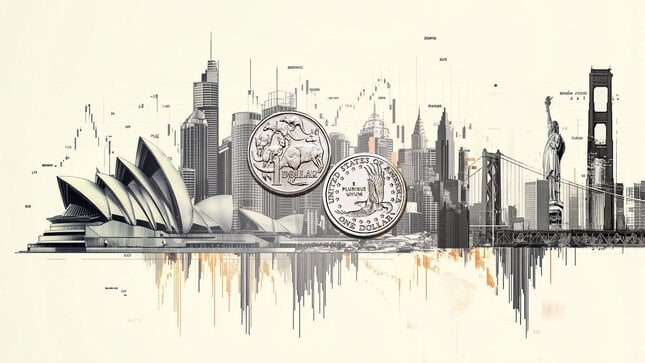There are only three ways you can make money in the market as a trader.
1. Asymmetric bets
This is the most common and also probably the hardest way to achieve success. You can create an edge by either having a high win rate with a negative risk-reward ratio or a low win rate with a positive risk-reward ratio. The biggest trope that you always hear is “Risk one dollar for every two dollars of profit and you will be profitable even if you are right just 50% of the time” This sounds so seductively simple that almost everyone falls for this lie. Alas, markets are not that stupid and no one is about to offer you 2 dollars bills for every one dollar bet 50% of the time. You’ll find that if you strictly adhere to the 2:1 rule your win rate will be closer to 25% and you will bleed money because markets are extremely efficient at taking it away from you. In fact, because of the natural two-way volatility of the markets you are likely to get a better edge with a 1:2 risk-reward ratio aiming for a 70% win rate rather than a 2:1 ratio aiming for a 40% win rate. However, both are very difficult to achieve which is why in real life most prop traders try to aim for 1:1 risk-reward and 55% to 60% accuracy rate.
A variant of the asymmetric bet structure approach is to change size according to your level of confidence which is even harder to do both psychologically and mechanically. The idea is to increase your size when you are winning and reduce it when you are losing. The problem of course is that this method depends on the assumption of continuity. If the markets suddenly reverse at your biggest size then your risk of ruin is magnified manyfold as you now own a much larger position at much worse prices.
George Soros was the master at this type of trade and that is why will deservedly go down in history as one of the greatest traders ever. Always mindful of risk he tried to make these types of trades with open profits rather than equity. For example, in the $1 billion short pound trade that broke the Bank of England, Soros put all of the fund's yearly profits on the line. If he won the trade made him a billion dollars. If he lost the funds net asset value would be unchanged and they would simply have returned zero that year. While this sounds reasonable, it’s impossible to describe how difficult it is to do in real life and it requires both perfect timing and nerves of steel to vary size asymmetrically in your favor. Most traders typically wind up making their worst trade with their biggest size and face risk of ruin when that happens. Even Soros was not immune from making big mistakes and lost more than a billion dollars more than a few times including $2 billion during the Russian economic collapse crisis. So while his technique of betting huge on a few prime ideas has served him well over the years it has never been widely copied precisely because it is so difficult to execute which is why he remains unique in his skills.
2. Time
One of the most underappreciated profit strategies in the market is time. The back and forth volatility of all tradable assets suggest that given a long enough time horizon price will eventually revert to profit on most of your positions.
Time of course is the prime edge in investing. Because equities have a long-term upward drift, simply waiting out the drawdowns on a well-diversified equity portfolio is pretty much a guarantee that your position will turn positive eventually. But guarantee is a relative term. Investors in the US had to wait 26 years before the Dow recovered from the Great Crash and investors in Japan have been waiting since 1989 to recover their losses in the Nikkei. As John Maynard Keynes once said, “In the long, we are all dead”.
Still, time is a very important trading variable for banks, dealers and market makers because they all possess much larger balance sheets than any one individual trader in the market. They can wait out the crashes and the spikes and usually flip over their inventory at a profit. Dealers are almost always on the opposite side of the market move as they are the ones providing liquidity. However, retail traders who try to mimic such methods rarely succeed because they require very deep pockets to average down or average up into the move and survive the massive temporary drawdowns. Dealers also have access to bank credit or even the Fed itself so waiting out your losses is a method that works for them but not for you.
3. Size
Martingale is yet another approach that many retail traders use to try to beat the market but it is scorned by most professional traders as an incredibly naive way to lose money. And for good reason. Unless you have an unlimited bankroll, martingale is always a negative expectancy strategy. In a martingale strategy, the trader increases the size of the new trade exponentially after every stop out in order to cover the past losses and achieve a small profit. It’s easy to see how such an approach can quickly blow out the account - and in fact, it’s probably fair to say that this is one of the most common ways for retail traders to lose money.
Yet progressives sizing - which is at the core of the Martingale strategy - get a very bad rep because very few traders know how to use it properly. First and foremost in progressive sizing a trader needs to capitate his loss. In my trading room, we limit our cumulative loss on any one trade cycle to 2.5% of the account. This means that your opening bet must be ridiculously small. In our case, we trade for one basis point. Before you keel over laughing, consider one thing. We generally execute 10 trade cycles per day and bank an average of 10 basis points. Do that 250 days a year and suddenly you have a 25% return. Not so funny anymore- right?
The second false assumption of martingale critics is the belief that every single trade in the market is a completely independent event much like the roll of the roulette wheel. That would be true if at any given moment in the market all the participants would be unique individuals oblivious to the most immediate past, but the fact of the matter is that on a day to day basis many of the market participants are the same and are keenly aware of the prior price action especially on an intraday basis. That means that trades are dependent on conditional probability rather than independent probability and that in turn means that your trade strategy may lie outside of normal distribution curve and provide you with an edge. For example, under normal distribution assumptions, we should experience a “terminal stop out” once out of 255 trades, but in reality, the odds are much smaller (less than one out of 1000 trades) which offers us a positive edge to make a small amount of money almost every day.
Still, critics of martingale have it mostly right. Betting blind, betting big and having no predetermined limit is a certain road to ruin. One of the most important things to remember in a trading scheme that relies on progressive sizing is that you are trying to beat just one specific trade setup, not the whole market. The moment you lose sight of that fact is the moment you become vulnerable to a blowup.
Past performance is not indicative of future results. Trading forex carries a high level of risk, and may not be suitable for all investors. The high degree of leverage can work against you as well as for you. Before deciding to trade any such leveraged products, you should carefully consider your investment objectives, level of experience, and risk appetite. The possibility exists that you could sustain a loss of some or all of your initial investment and therefore you should not invest money that you cannot afford to lose. You should be aware of all the risks associated with trading on margin, and seek advice from an independent financial advisor if you have any doubts.
Editors’ Picks

Gold Price Annual Forecast: 2026 could see new record-highs but a 2025-like rally is unlikely Premium
Gold hit multiple new record highs throughout 2025. Trade-war fears, geopolitical instability and monetary easing in major economies were the main drivers behind Gold’s rally.

AUD/USD Price Annual Forecast: Is 2026 the year the Aussie breaks above 0.70? Premium
In a context where AUD/USD rate differentials, institutional credibility, and geopolitical dynamics are once again central, 2026 could mark a new phase in the balance of power between the Australian Dollar and the US Dollar.

USD/INR Price Annual Forecast: Indian Rupee could disappoint both optimists and pessimists alike in 2026 Premium
The Indian Rupee (INR) has seen a consistent depreciation against the US Dollar (USD) for the last several years and turned out to be the worst-performing Asian currency in 2025.

Top 10 crypto predictions for 2026: Institutional demand and big banks could lift Bitcoin
Bitcoin’s (BTC) adoption story is unraveling and the king crypto could see institutional demand return in 2026. Crypto asset managers like Grayscale are betting on Bitcoin’s rally to a new all-time high next year, and themes like Bitcoin as a reserve asset are emerging.

S&P 500 Price Annual Forecast: 2026 to benefit from decent growth as Trump runs it hot Premium
BlackRock, the world's largest asset manager, ran an online survey in early December asking respondents whether attractive returns for risk assets would continue for a fourth straight year in 2026.
RECOMMENDED LESSONS
Making money in forex is easy if you know how the bankers trade!
I’m often mystified in my educational forex articles why so many traders struggle to make consistent money out of forex trading. The answer has more to do with what they don’t know than what they do know. After working in investment banks for 20 years many of which were as a Chief trader its second knowledge how to extract cash out of the market.
5 Forex News Events You Need To Know
In the fast moving world of currency markets where huge moves can seemingly come from nowhere, it is extremely important for new traders to learn about the various economic indicators and forex news events and releases that shape the markets. Indeed, quickly getting a handle on which data to look out for, what it means, and how to trade it can see new traders quickly become far more profitable and sets up the road to long term success.
Top 10 Chart Patterns Every Trader Should Know
Chart patterns are one of the most effective trading tools for a trader. They are pure price-action, and form on the basis of underlying buying and selling pressure. Chart patterns have a proven track-record, and traders use them to identify continuation or reversal signals, to open positions and identify price targets.
7 Ways to Avoid Forex Scams
The forex industry is recently seeing more and more scams. Here are 7 ways to avoid losing your money in such scams: Forex scams are becoming frequent. Michael Greenberg reports on luxurious expenses, including a submarine bought from the money taken from forex traders. Here’s another report of a forex fraud. So, how can we avoid falling in such forex scams?
What Are the 10 Fatal Mistakes Traders Make
Trading is exciting. Trading is hard. Trading is extremely hard. Some say that it takes more than 10,000 hours to master. Others believe that trading is the way to quick riches. They might be both wrong. What is important to know that no matter how experienced you are, mistakes will be part of the trading process.
The challenge: Timing the market and trader psychology
Successful trading often comes down to timing – entering and exiting trades at the right moments. Yet timing the market is notoriously difficult, largely because human psychology can derail even the best plans. Two powerful emotions in particular – fear and greed – tend to drive trading decisions off course.


